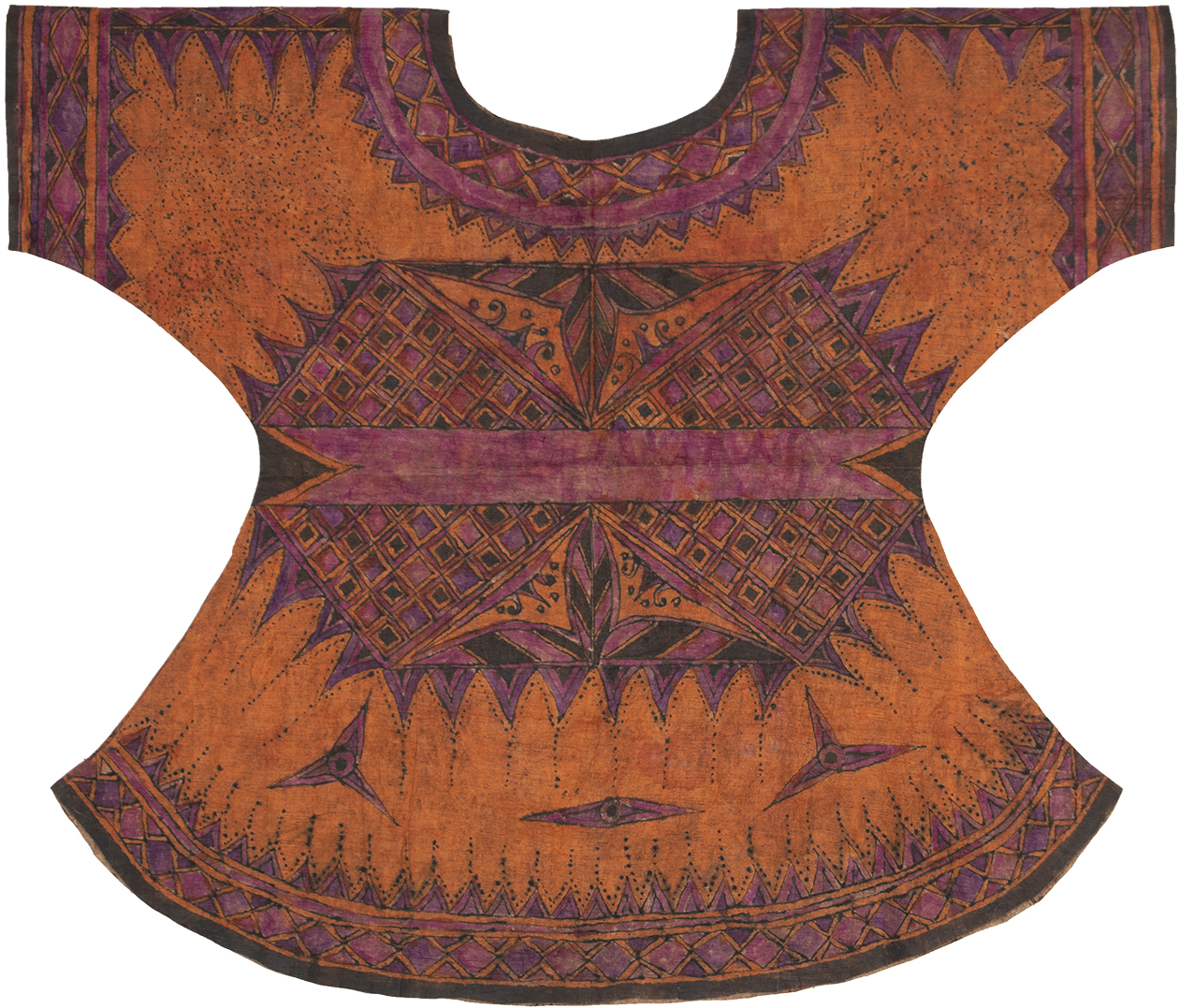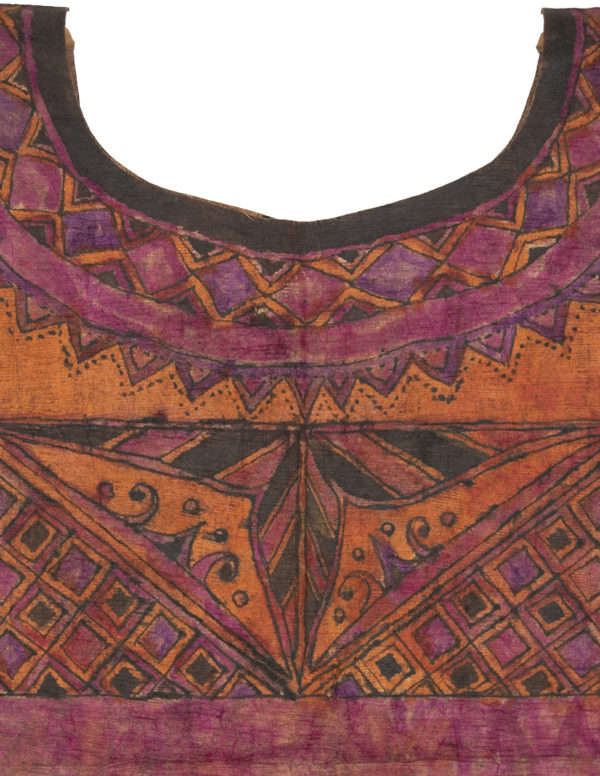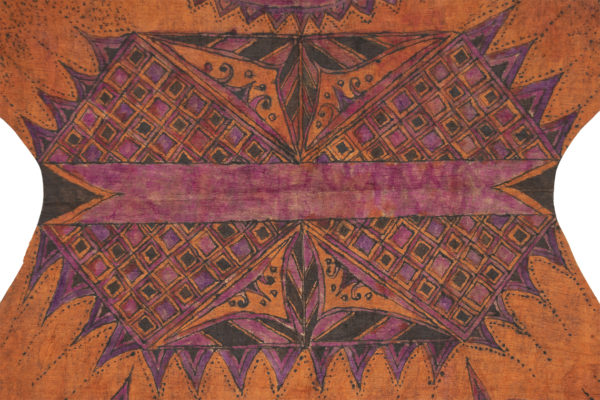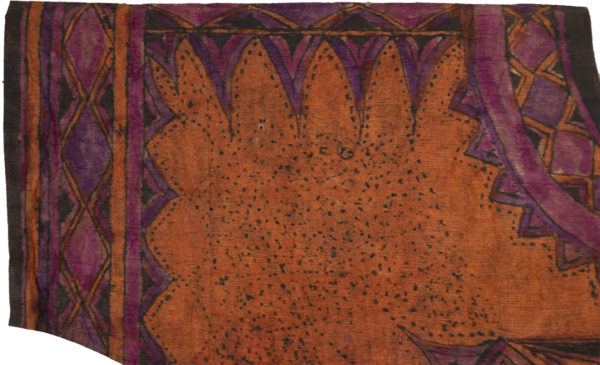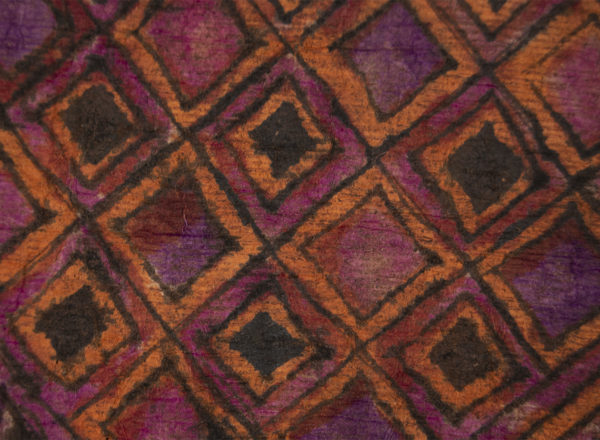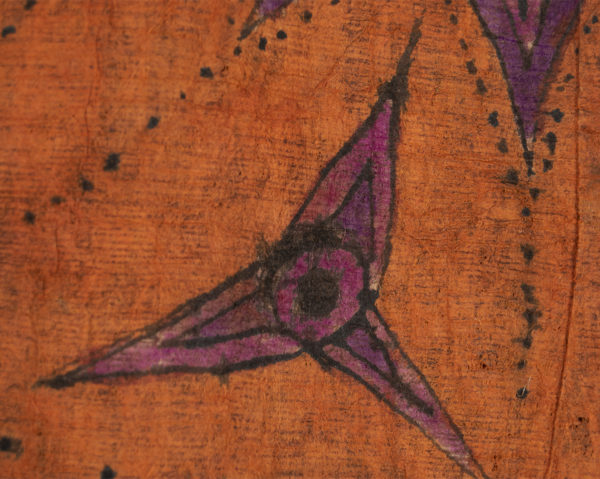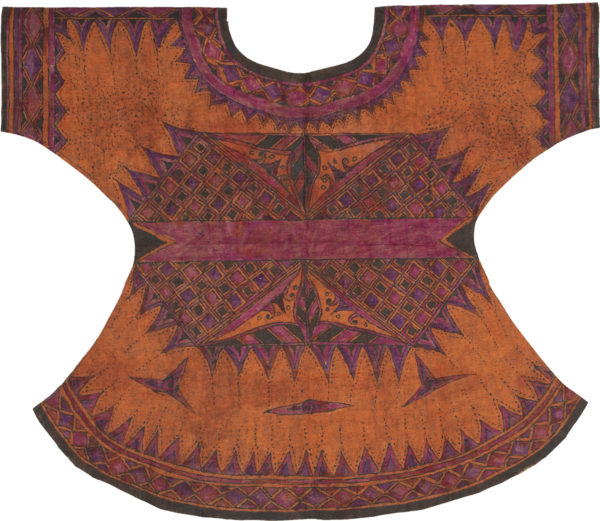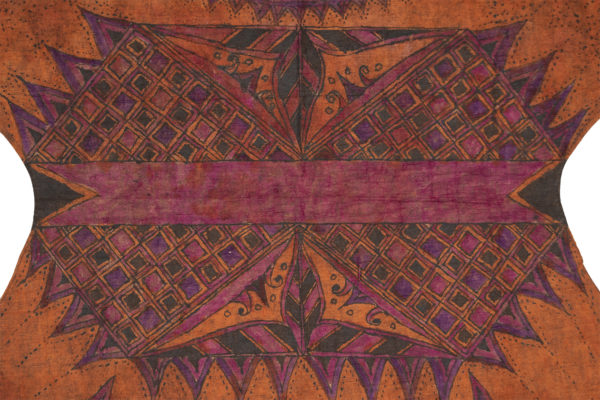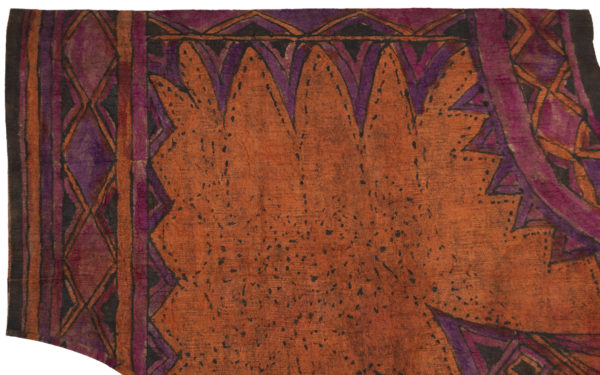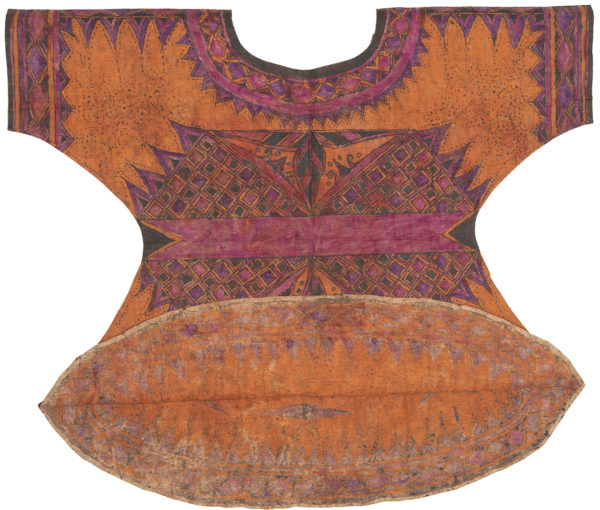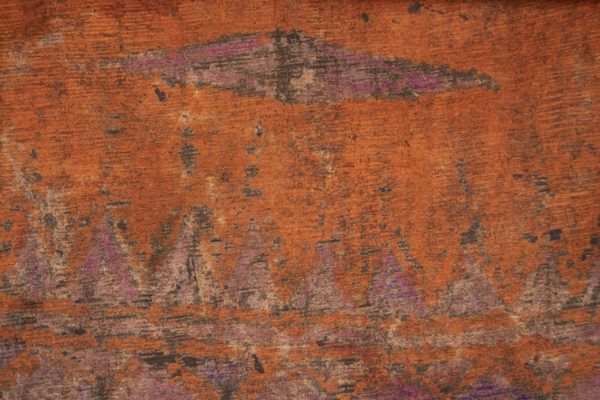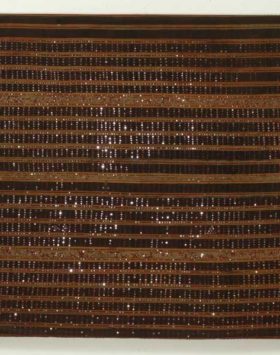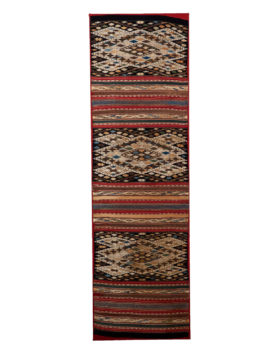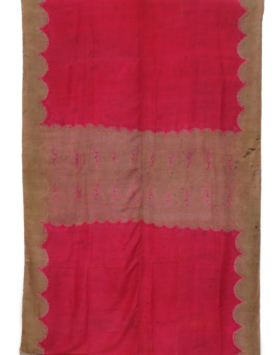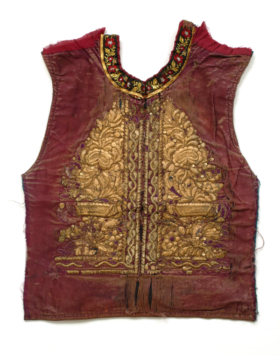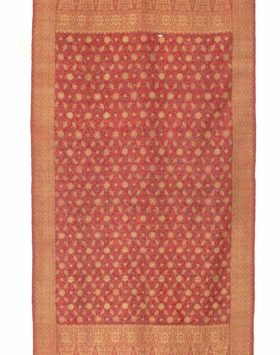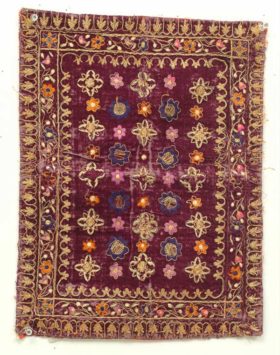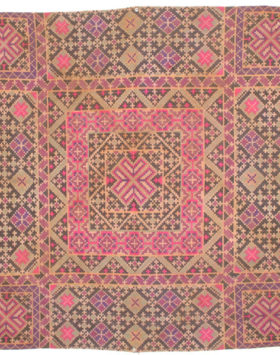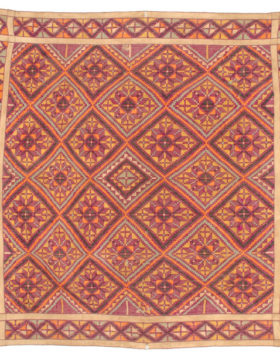Painted Fiber Blouse
The people of the region of Central Sulawesi, Indonesia, primarily dressed in barkcloth before the introduction of woven textiles in the 20th century. Daily, men wore loincloths and women wore pleated, layered skirts with blouses like this one. The barkcloth was mostly made from mulberry and ficus trees, this blouse being mulberry due to its delicate texture and lighter color (as seen on the inside). The ficus barkcloth had a darker color and was worn daily, while the mulberry barkcloth was worn for ceremonial purposes and special occasions.
Barkcloth is created from the bark of trees, specifically the softer part below the rough outer bark. Men would help get the bark, separate it, and make the tools, but typically, the beating and decoration was done by women. The inner bark is separated, boiled, cooled, and then wrapped in leaves and fermented for three, five, or seven days. It is taboo for the cloth to be disturbed during the fermenting process. It is also forbidden for the fabric to be made inside homes, after sunset, during the harvest season, after an epidemic, or during mourning periods following a relative or noble’s death. The cloth would then be beaten with a specific set of tools made out of wood and stone that are all used in different stages of the beating process. Since each tool made a distinct noise, neighboring residents would be able to tell what step they were on based on those sounds. Out of this material, skirts, head wraps, blouses, and loincloths would be made. They would then be decorated with paint and applique; this one is completely painted with orange, black, and purple. The designs are typically geometric and resemble growing plants or the sun.
Because of Islamic and Christian missionaries that introduced woven fabric, the production of barkcloth almost disappeared beginning in 1908, until 1940. During World War II, Japanese occupation prevented them from getting woven cloth, so from 1941-1945 women returned to the tradition of making barkcloth to make clothes for their families.
Circa: 20th Century
Origin: Central Sulawesi, Indonesia
Material: Barkcloth & Paint
Condition: Excellent
Dimensions: 35 1/2" Sleeve to Sleeve, 29" tall
Inventory number: WR3966
$2,875
SOLD
Call: (646) 370-6801
E-mail us: yosi@sarajo.com
